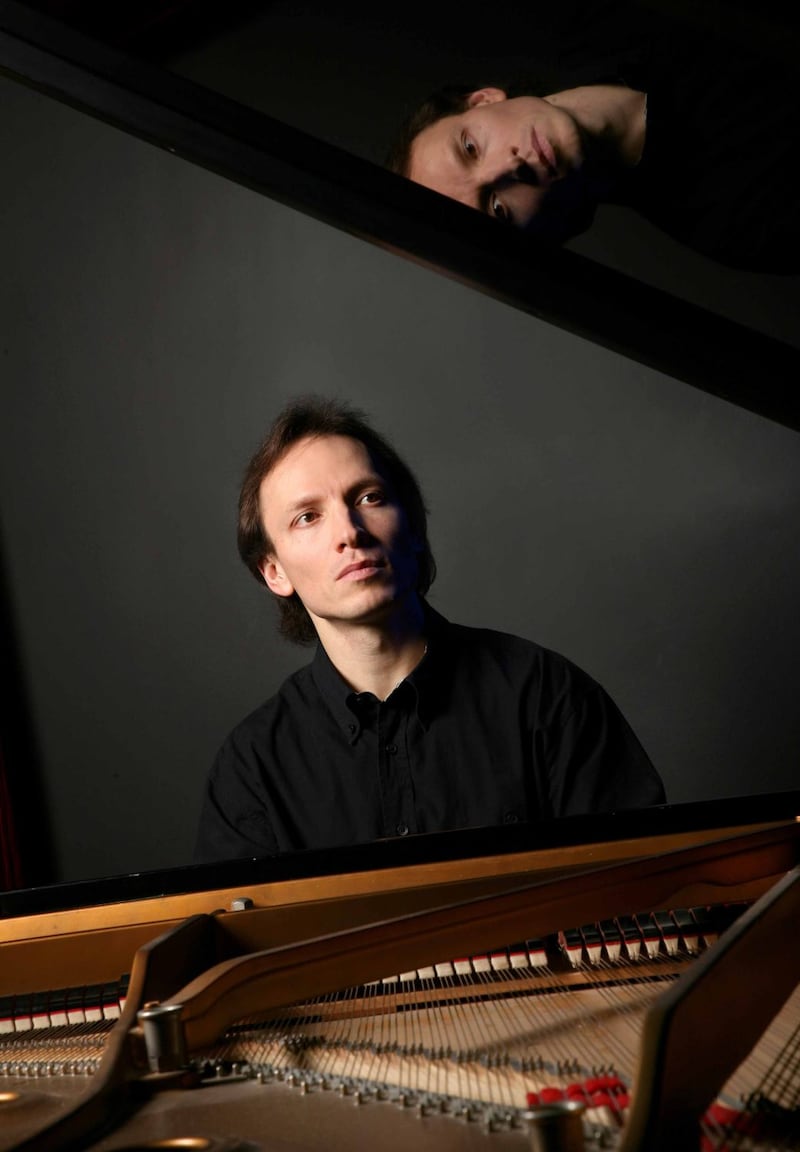The most famous of Beethoven’s violin sonatas have nicknames. The Spring is named for its air of pastoral ease – although that choice of name had nothing to do with the composer. The Kreutzer got its nickname because of its dedication to Rodolphe Kreutzer, a famous French player who never performed the work; Beethoven had fallen out with George Bridgetower, the British violinist for whom he had written the piece.
The French violinist Fanny Clamagirand and the Kazan-born Russian pianist Roustem Saitkoulov will be playing both as part of their complete cycle of Beethoven’s 10 violin sonatas, over five concerts, at West Cork Chamber Music Festival.
They only worked on Beethoven together for the first time in 2020. In that troubled year they didn’t get to do the whole set together. That’s happening for the first time in Bantry.
Saitkoulov talks about the “many wonderful players” who played and recorded this repertoire, and highlights the violinists David Oistrakh, Henryk Szeryng and Joseph Szigeti. But he laments the lack of a set involving a violinist who is “a true Beethoven interpreter of standing, someone like Schnabel.”
The Austrian pianist Artur Schnabel was the first person to record a complete set of the Beethoven piano sonatas, in the 1930s. Saitkoulov approvingly quotes the remark by Schnabel’s teacher Theodor Leschetizky, who told the young man, “You will never be a pianist; you are a musician.”
“I think Beethoven’s language is so specific,” he says, “that it has nothing to do with this common tendency, which we have nowadays, of exposing one’s instrumental capacities, the brilliance of the instrumental playing. Beethoven’s language, I think, is completely contrary to that vision of playing. When I look at the score I see something very different from what I hear.”
He talks enthusiastically about the radical Russian pianist Maria Yudina, who took a strongly anti-establishment, pro-avant-garde stance in the Soviet Union, and the Swiss pianist Edwin Fischer, whose master classes were attended by Alfred Brendel and Daniel Barenboim. One of the orchestral Beethoven interpreters he rates highly is the Dutch conductor Willem Mengelberg, who recorded Beethoven with Amsterdam’s Royal Concertgebouw Orchestra in the late 1930s and early 1940s. He describes the recordings as “completely outstanding”.
Is the special quality of Schnabel’s recordings partly to do with his use of a Bechstein piano? “One of my pianos is a Bechstein from 1919,” he says. “I think the Bechstein definitely has a speaking tone and a capacity of articulation which is washed out by Steinway’s brilliance. When you play on a Steinway, the sound is so impressive and so brilliant and so open that these speaking qualities are somehow drowned.”

Tackling the set as a cycle for the first time, Clamagirand is concerned about maintaining a broader perspective than she would have had when she first worked on them. She talks of “understanding the relationship between the sonatas” and says that “it’s quite easy to see how they are different to one another. But they are always coming from light to darkness or from darkness to light. And it’s also a cycle of life, of living. Maybe now, being more mature, I can feel more of the emotions that Beethoven was facing in his life. There is something very human in these sonatas. I hope we can express that and share it with the public.”
They each probably have habits, she says, from their history of playing the sonatas with a range of partners. “We have to find a way to agree ... or agree to disagree ... to find our voice together – and, yeah, the right dialogue. This is what is so interesting. We want to build something together. No one wants to play the way we did before. This music is so rich, so intense, so complex. Sometimes, when we’re rehearsing, we’re just experiencing new things. And even when performing, some new ideas can just come. We have to be able to feel as free as possible in that relationship and, as in a dialogue, be able to react quickly.”
Saitkoulov points to the challenges posed by the very different natures of their two instruments, one with a genuine singing line, the other where the notes all start to fade the moment they are struck. “When working together, it’s interesting to observe how we can establish a kind of common language through finding the most appropriate articulation. It is so hard to achieve between two such different instruments.”
They may, he says, even have to work through “completely opposed ways of articulating”, or seek out a way of “going logically from one part to the other and somehow find the harmony and the conflict at the same time, which is so characteristic of Beethoven’s writing”.
Which work is the most challenging? Clamagirand skirts the virtuosic, concerto-like Kreutzer and suggests the early Sonata in A, Op 12 No 2, “so simple and so hard”, and the last one, Op 96 in G, “probably because it’s so different, composed so much later than all the others”. Saitkoulov nominates Op 96 as well, “because it is very mature Beethoven. It can be maybe compared to the writing in his later piano sonatas. It’s very difficult pianistically and in terms of articulation, being the most delicate of the set.”
The one he looks forward to most is “definitely the Kreutzer Sonata. It has the most developed, the boldest writing for both instruments. And it’s so beautifully written for the piano, especially the second movement, a set of variations. And the narrative is very, very special.”
Clamagirand acknowledges the excitement and the richness of the Kreutzer but won’t make a choice. “I think they are all so interesting. Each of them is a jewel. I think that’s why we decided to do this cycle. Because we love them all.”
West Cork Chamber Music Festival runs from Friday, June 28th, to Sunday, July 7th




















